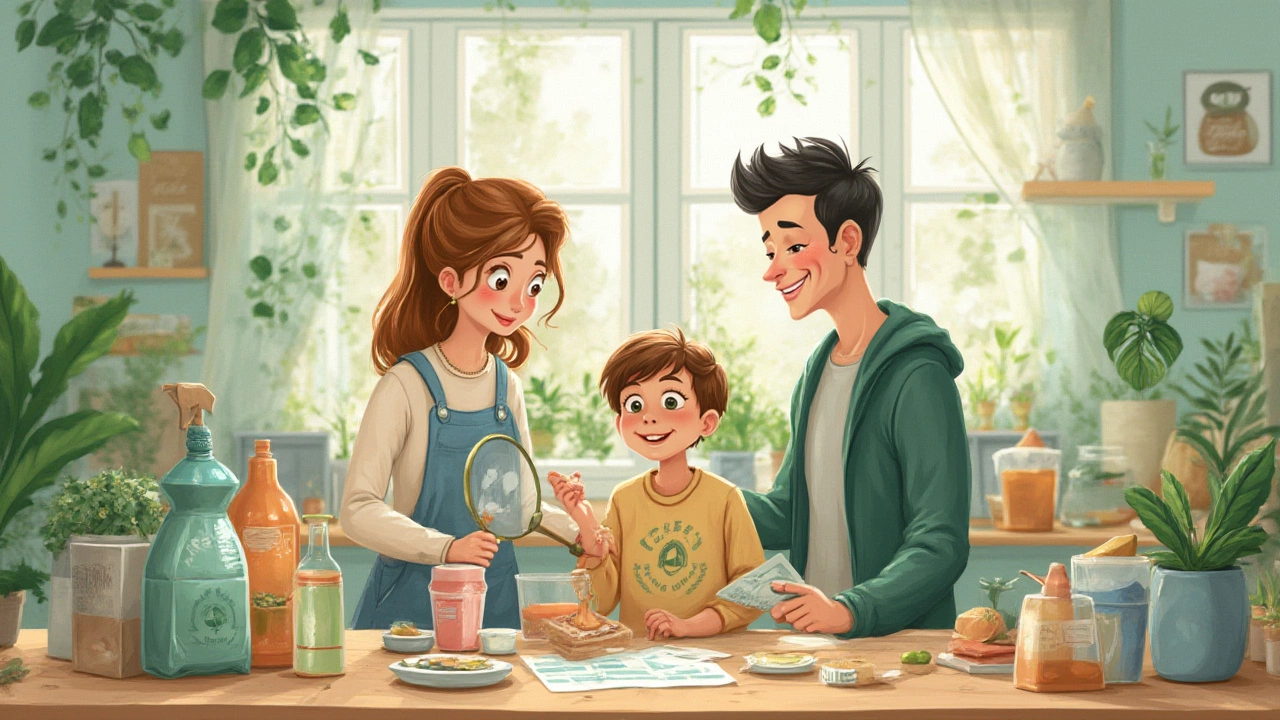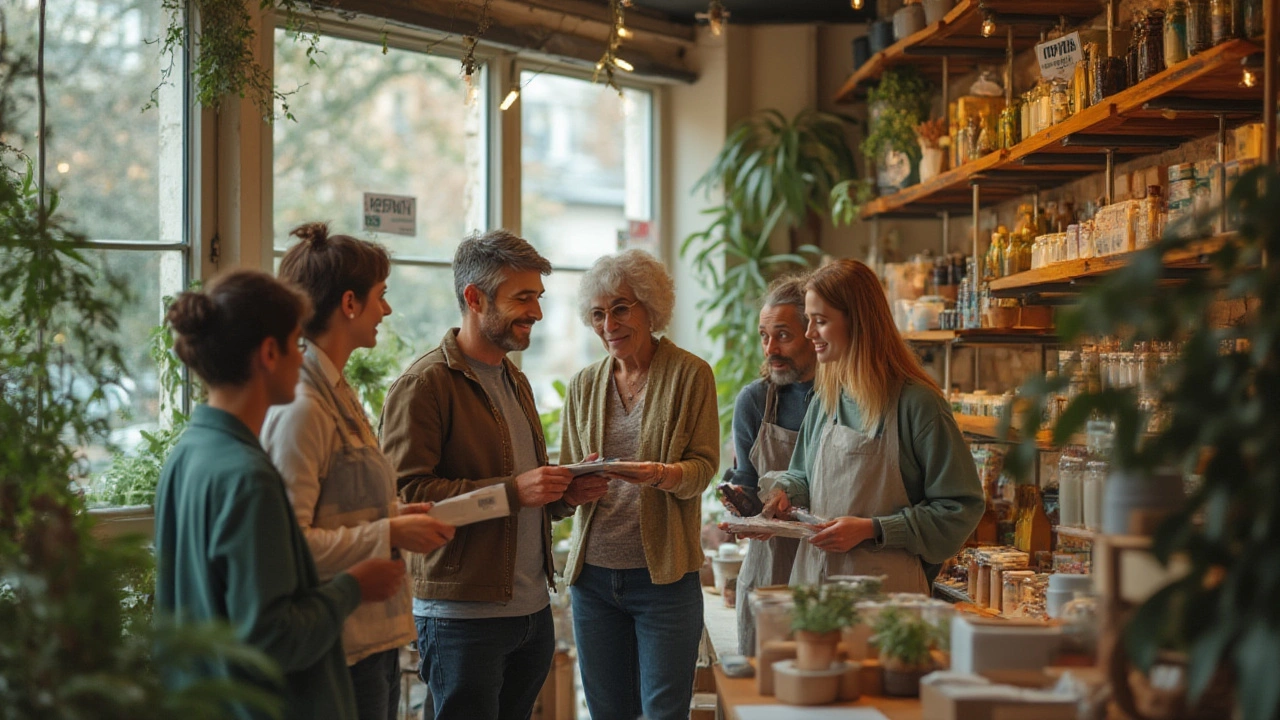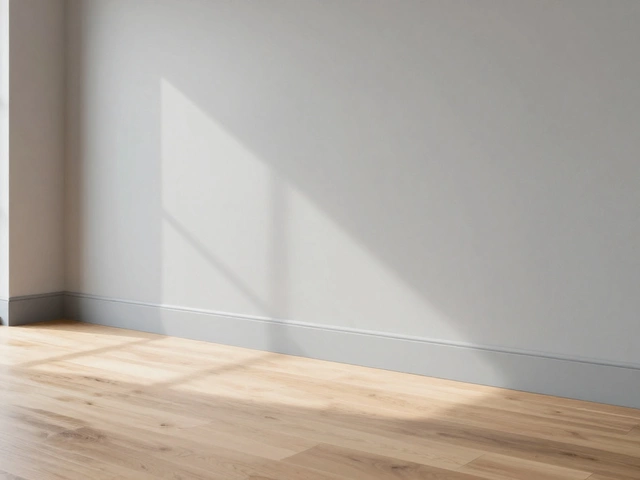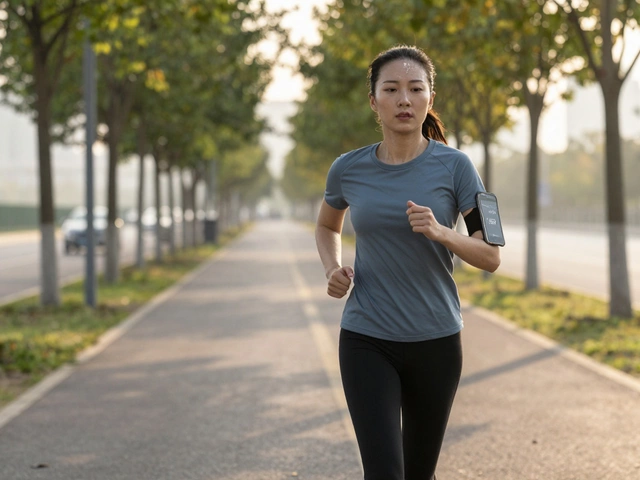Ever stared at a shelf of so-called ‘green’ products and wondered which ones actually make a difference? You’re not alone. With climate change always in the headlines and plastic choking our oceans, more people are ditching wasteful products for eco-friendly alternatives. But, let’s be real—finding stuff that’s actually better for the planet isn’t as easy as slapping a leaf-shaped logo on a box. It takes a bit of detective work, some skepticism toward shiny marketing, and a willingness to dig into the details. Ready to build habits beyond “recycled paper” and ditching plastic straws? Roll up your sleeves, because we’re about to uncover what makes a product genuinely sustainable, how you can tell when brands are faking it, and where to find the real deals.
Cracking the Code: What Makes a Product Truly Eco-Friendly?
Let’s cut through the noise. Eco-friendly doesn’t just mean “less bad”—it’s about products designed from start to finish with real care for the environment, people, and animals. But not every company plays by the same rules. Here’s what you should keep an eye on if you actually want your purchases to make a difference:
- Materials matter. Opt for natural, renewable, recycled, or upcycled materials. Think certified organic cotton, bamboo, recycled plastics, FSC-certified wood, or even creative stuff like mushroom-based packaging. For example, Nespresso in Australia started collecting its aluminum pods for recycling, turning them into bikes with a Sydney-based social enterprise back in 2023. That’s circularity done right.
- Production counts. Sustainable means low-impact manufacturing. Does the brand use renewable energy, limit water waste, or avoid toxic chemicals? The footwear brand Allbirds, for instance, lists the carbon footprint of each shoe right on the box, pushing transparency to the next level. Ask brands what they’re doing behind the scenes.
- Packaging: less is more. Single-use plastics? Hard pass. Try companies with compostable, minimal, or refillable packaging. Zero Co (from right here in Australia) lets you buy cleaning supplies and toiletries in bags you send back for reuse. That’s pretty hard to beat.
- Certifications—look beyond the buzzwords. Eco-certifications like B Corp, Fairtrade, Rainforest Alliance, Global Organic Textile Standard (GOTS), and Leaping Bunny (for cruelty-free products) actually mean something. “Natural,” “green,” or “eco” by themselves? That’s just clever marketing unless backed by standards. Always check for documentation or links to the official certifying body—if you can’t find them, be wary.
- Product lifespan and afterlife. Can it be reused, composted, or recycled easily in your local area? Or, does it break and end up in landfill? Brands like Patagonia repair their clothes, and even resell used gear—a shift away from “buy, toss, repeat.”
But here’s a fun fact: Researchers from the University of Technology Sydney hung out in our local supermarkets for a study in 2024, checking over 500 ‘eco’ products. Turns out, only about 22% held up to their green claims when you checked the supply chain or end-of-life details. This shows greenwashing is alive and kicking—don’t get caught out.
So, next time you spot a “green” product, slow down. Flip it over, check the ingredients, look up the brand’s website on your phone, or even scan it with an app like Good On You (for clothes) or Yuka (for food/cosmetics). You’ll be surprised how often the truth hides in fine print—or isn’t even there.

How to Shop Smart: Avoiding Greenwashing and Spotting Authentic Products
“Green” sells. That’s why so many brands stretch, blur, or simply make up claims to snag your attention. It’s called greenwashing—basically, pretending to be more earth-friendly than reality. Here’s how to chop through the spin and actually get what you pay for:
- Don’t trust the fancy packaging. Green leaves and brown bottles look nice, but mean nothing. Instead, hunt for eco-friendly products with third-party certifications. A product certified by the Blue Angel or EU Eco-label (in Europe) or Australia’s GECA has been reviewed by independent experts.
- Check for honest numbers. “We use less plastic!”—but how much less? Brands that mean it show the facts. In 2023, Coles supermarkets claimed a 20% reduction in plastic on fresh produce packaging—and released a public report so you could check. If a claim isn’t backed up with measurable, recent data, take it with a grain of salt.
- Trace the supply chain. Where are ingredients or materials sourced? Was the labour fair? A lot of “organic” coffee, for example, is both shade-grown (better for biodiversity) and certified by Rainforest Alliance, ensuring standards for workers and the environment.
- Look for brands that talk about their mistakes. No company is perfect—if they acknowledge their flaws and publish plans for improvement, they’re usually more honest. Who Gives a Crap (Aussie bamboo toilet paper legends) post detailed ‘impact reports’ about their progress, including what still needs work.
- Beware chemical tricks. “No parabens!” or “No BPA!” shouts the label—but if the company swaps out one dodgy chemical for another less-known one, that’s not really safer or greener. The best brands use simple, recognizable ingredients, or publish a full ingredient list (think Koala Eco’s cleaning formulas).
- Read recent reviews on eco forums, Reddit threads, or local Facebook groups. Real people tend to speak up about products that overpromise and underdeliver, especially on sustainability.
- Download an eco-shopping app. Tools like EWG’s Healthy Living (US-focused), Think Dirty, or Good On You let you scan barcodes and get the lowdown on products’ ethical or environmental impacts. Super handy if standing in an aisle with five different “green” laundry powders and no clue what’s trustworthy.
Here’s a quick table comparing some common certifications, what they actually stand for, and examples of products they protect you from greenwashing. Keep this handy for your next shop:
| Certification | What It Stands For | Typical Products |
|---|---|---|
| GOTS | Organic textiles (at least 95% certified organic fibers, no toxic dyes, fair working conditions) | Clothes, bed linen |
| B Corp | Social & environmental performance, transparency, accountability | Anything (food, fashion, homewares) |
| Rainforest Alliance | Protecting forests/wildlife, good jobs for farmers, sustainable agriculture | Coffee, chocolate, tea |
| FSC | Sustainably managed forests | Paper, furniture, wood |
| Leaping Bunny | Cruelty-free (no animal testing) | Cosmetics, cleaning, bath |
| GECA | Australian ecolabel—lifecycle standards, safe materials, worker rights | Home cleaning, building materials |
One extra tip: Avoid “miracle” eco-solutions that just create new problems. For example, some “biodegradable” plastics only break down in industrial composters—and can cause more confusion in recycling bins. Glass jars or metal tins, on the other hand, are widely recyclable and reused endlessly. Simple usually beats high tech when it comes to sustainability.

Where to Find the Good Stuff: Your Guide to Eco-Friendly Shopping
The secret to shopping eco-friendly isn’t just about finding a list of brands. It’s about knowing where to look, when to ask questions, and how to build a stash of greener alternatives that fit your life. Here’s how to get started, wherever you are in Australia (or, honestly, most places):
- Local refill stores and co-ops: Sydney alone saw 36 zero waste stores open between 2020 and 2024. They stock everything from shampoo “bars” to packaging-free tofu—plus staff who know their stuff. Even supermarkets are trialling bulk refill stations for laundry liquid and cereals. Bring your own jars or bottles for a win-win.
- Online eco shops: Sites likeBiome, Flora & Fauna, and Ecobuy offer curated selections of certified green brands—plus reviews from real Aussies. If you’re after cosmetics, The Clean Beauty Market spells out every ingredient, with vegan and cruelty-free tags. For household needs, Zero Co delivers refillable pods and satchels (just return them when empty!).
- Farmer’s markets: Seasonal, local produce slashes transport emissions. You’ll usually find plastic-free veggies, natural cleaning products, and sometimes even package-free pet treats. My personal favorite? The Bondi Markets for their fresh sourdough bread and upcycled tote bags made from old advertising banners.
- Big brands making real changes: It sounds surprising, but even supermarket chains like Woolworths have “free-from” aisles now—including Australian Certified Organic soap, compostable sandwich bags, and (since 2024) Fairtrade-certified chocolate options. These moves shift the needle, fast.
- Secondhand and upcycle: Buying used is the least wasteful move of all. Sites like Depop and Facebook Marketplace are packed with vintage clothes and pre-loved furniture. Even kitchen appliances turn up here—often practically new, rescued from landfill.
- Direct from eco brands: Sometimes, the greenest stuff is only available through a brand’s own web store. Toothbrushes from The Natural Dentist, period products from Modibodi, or work-from-home set-ups from EcoFibre. Buying direct cuts packaging, supports small Australian businesses, and means your questions are more likely to be answered honestly.
- Community shares and repair cafes: Want to borrow a tool or mend a broken blender? Community libraries or scheduled “repair cafes” let you share, fix, and learn. Sydney’s “Mend & Make Do” collective fixes jeans and rewires lamps for the cost of a coffee or a homemade cake—nothing wasted, everything cherished.
As you explore, keep this checklist in your phone notes:
- Does the brand have third-party eco certifications?
- Are ingredients or materials clearly listed and easy to understand?
- Is the packaging minimal, compostable, or reusable?
- Is it made to last or to be repaired?
- Can you return, recycle, or compost the product locally?
Little by little, these habits build up, and suddenly you realise—your bins are emptier, your home feels simpler, and your money is supporting better businesses. Not every swap will be perfect, and sometimes the “greener” option is out of stock or pricier. But the more we look for truth over hype, the faster companies will shift for real. And, bonus, you’ll snag some fun conversations and hidden gems at markets or refill shops along the way.
The journey to greener shopping isn’t about guilt or perfection, just smart choices one step at a time. Next time you’re out, glance past the clever logos, scan a barcode, or just ask one question most shoppers don’t: “What happens to this when I’m done with it?” The answers might surprise you—and will definitely help you do less harm and a lot more good.








